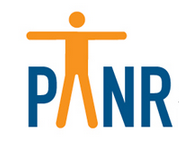Orestis Antoniades1,2, Helen T. Douda1*, Dimitrios Papazoglou3, & Savvas P. Tokmakidis1
1School of Physical Education & Sport Science, Democritus University of Thrace, Greece
2University of Cyprus, Nicosia, Cyprus
3Medical School, Dragana Alexandroupoli, Democritus University of Thrace, Greece
*Contact Corresponding Author: 
Abstract
Purpose: The purpose of this study was to determine the prevalence of hypertension as well as practical clinical indicators of cardiac function in overweight and obese children and adolescents. Methods: A total of 1.987 healthy Greek and Cypriot children and adolescents were divided according to their age (8-10 yrs: n=596, 11-12 yrs: n=406, 13-15 yrs: n=484, >16 yrs: n=501), the stage of hypertension (Normotensive n=1.647, Hypertensive n=340) and the obesity level (Normal weight n=1.477, Overweight n=364, Obese n=146). Measurements were obtained on anthropometric characteristics (height, body mass, BMI), blood pressure (SP: systolic, DP: diastolic) and resting heart rate (HR) in order to determine the pulse pressure at rest, mean arterial pressure, rate pressure product and cardiac index using specific equations. Results: Οf the total sample, 74.3% had a normal BMI, 18.34% were overweight and 7.3% were characterized as obese without differences between gender (x2=.004, p=.496) and the prevalence of hypertension was about 25.7% in both overweight/obese males and females. The Odds Ratio (ORs) of the two independent factors (obesity-hypertension) was ORs=4.31 (95% CI: 3.03 -6.13) for males and ORs=3.01 (95% CI: 2.05 – 4.52) for females. The normotensive non-obese participants presented better values in systolic (p<.001), diastolic (p<.001) and mean arterial pressure (p<.001), heart rate (p<.05), rate pressure product (p<.05) and the cardiac index (p<.001) as compared to hypertensive overweight/obese participants. When a stepwise multiple regression was applied in the overweight/obese group, using the cardiac index as a dependent variable (y=3.570 – .034*W + .040*HR – .061*DP + .031*SP – .036*Age), 95.7% of the total variance was explained by body mass (W: 45.4%), heart rate (HR: 22.6%), diastolic (DP: 14.5%) and systolic (SP: 12.7%) blood pressure and age (Age: 0.5%). In addition, a negative correlation was found between BMI and cardiac index (r=-.662, p<.001) while positive correlations were observed with other hemodynamic parameters (r=.33 to .55, p<.05). Conclusion: These results revealed that increased body mass affected the cardiac function of overweight/obese young people, irrespective of gender, and were associated with hypertension. In clinical practice, it is necessary to implement such useful prognostic indicators in childhood and adolescence in order to detect risk factors leading to cardiovascular disease at an early age.
Keywords: obesity, BMI, blood pressure, risk factors, children, adolescents
Download Αrticle:

